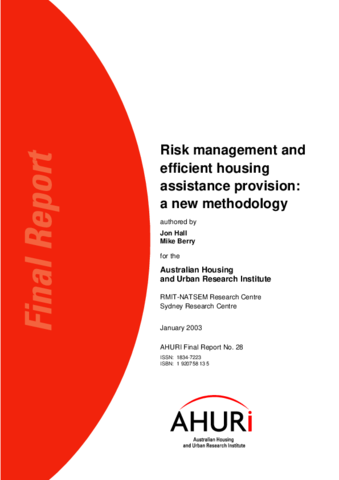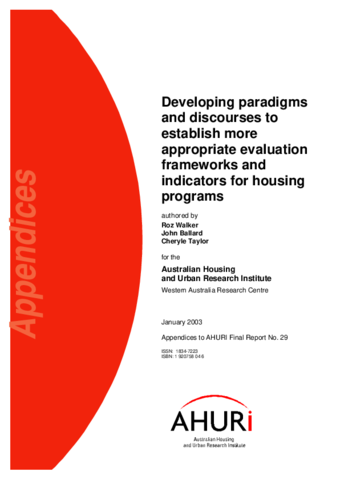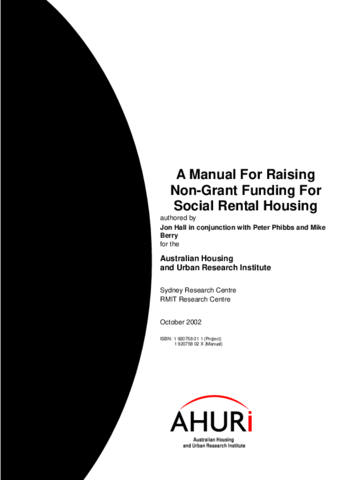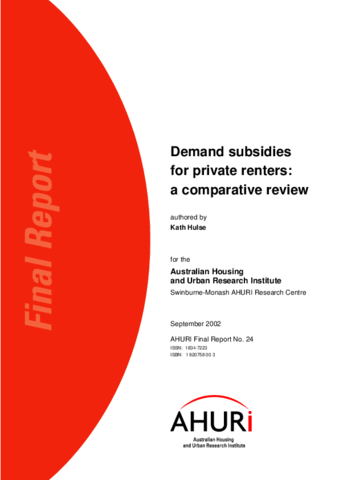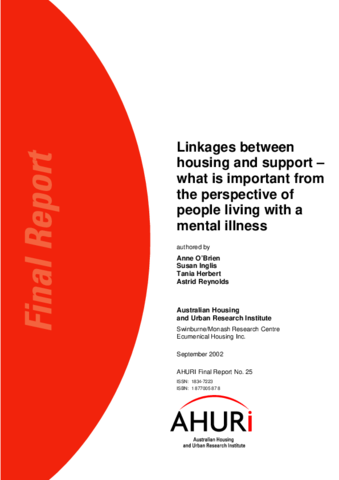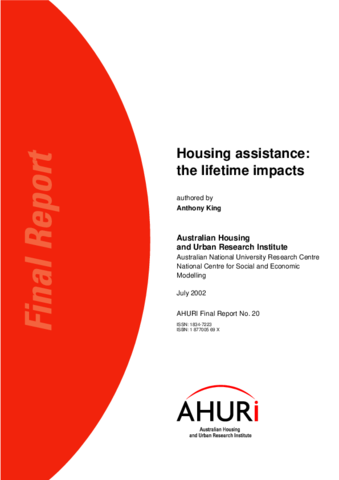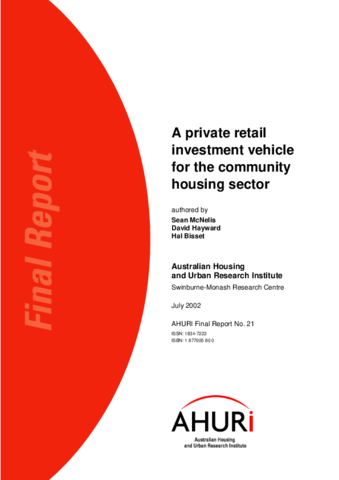
Search
Enter a keyword search term
Search results for
Sort by
Displaying 1341 - 1350 of 1536
Report
1st January 2003
Risk management and efficient housing assistance provision: a new methodology
view report
Report
1st October 2002
A manual for raising non-grant funding for social rental housing
view report
Report
1st July 2002


